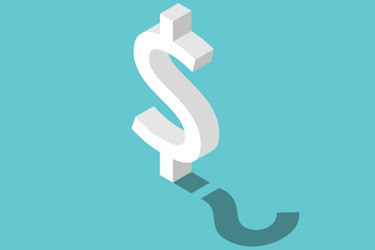Bristol Myers Squibb Buys Mirati: Signal Or Symptom?

By Louis Garguilo, Chief Editor, Outsourced Pharma

-- A Look Behind The Bristol Myers Squibb Deal for Mirati Therapeutics --
Admittedly astride our usual focus on drug development and manufacturing outsourcing, but I couldn’t stop from cogitating on another billion-dollar purchase by a Big Pharma of a burgeoning biotech.
I suppose by now all of us should be inured to those billions with the bilabial “b” expressing the size of price tags Big Pharma pays for biotechs nowadays – particularly those nearing the commercial finish line.
Nonetheless, allow me to explain what brought me to a surprising contemplation spurred by the recent news Bristol Myers Squibb (BMS) purchased Mirati Therapeutics for a cool $5.8 billion, which followed last year’s acquisition by BMS of Turning Point Therapeutics for $4.1 billion.
Those two deals neatly add up to about $10 billion of expenditures. The round number just seemed to hit home.
It shouldn’t have. Not after this year’s earlier blockbuster deal when Pfizer bought Seagen for $43 billion in cash.
And not if we recall 2019, the record-setting year estimated to have produced over $200 billion in such deals. That’s the year BMS (see a pattern developing?) spent $74 billion on Celgene, and AbbVie’s deal of Allergan was estimated at $63 billion.
So here's what I’m getting at.
Zeroing In
From this corner, I have little ability to judge the value or wisdom of the latest (or any) BMS deal. That’s not what this is about.
Mirati is billed as a commercial-stage, targeted-oncology company. The deal brings BMS KRAZATI® (adagrasib), a “best-in-class KRASG12C Inhibitor” approved by the FDA for certain targeted patients with advanced non-small cell lung cancer.”
KRAZATI is in clinical cevelopment in combination with a PD-1 Inhibitor as a first-line therapy for this patient cohort, as well as for other indications.
Mirati also has a pipeline including potent, selective PRMT5/MTA Inhibitor MRTX1719, and other early clinical candidates.
Sounds exciting and promising. So let’s take the specific deal value (the “Did they overpay?” discussion) off the table.
Even more fundamental, let’s also for now wipe away the overall strategy of “big buying emerging.”
I need not tell this readership that ever since the emergence of the biotech industry in the 1980s, larger pharmaceutical companies have acknowledged the potential of biotechnology, and started acquiring biotechs.
So it appears we are simply (and vigorously) continuing a late 20th-century phenomenon right through our 21st Century. That’s not newsworthy per se.
Finally, I’ll even posit we sweep aside the expressed, specific rationale for these deals.
For example, the reasoning for this most recent acquisition is stated by BMS in its press release:
“Mirati’s assets are a strong fit with Bristol Myers Squibb’s portfolio and innovative pipeline and represent an attractive opportunity to grow Bristol Myers Squibb’s oncology franchise.”
Sounds strategic, significant, and fully understandable.
But we get closer to our point of discussion when we reach the assumed (and obvious) rationale, as described, for example, in the Wall Street Journal’s coverage of the deal.
That newspaper states this is just “the latest example of a drugmaker targeting deals to replenish revenue as top-selling products face competition from generics.”
The paper goes on to say, “Pharmaceutical companies, including Bristol Myers Squibb, have turned aggressive deal-makers over the past year as they seek to offset the loss of exclusivity on top-selling drugs.”
And while this is surprising to no one, it is the catalyst for this column and thoughts on these BMS deals as representative of the current status of our drug commercialization industry, and how we price our drugs.
Effectively Effecting Pricing?
Today we strictly (my opinion) limit patent durations in order to provide for a robust and growing generics (including biosimilars) market.
We do so predominantly and ostensibly to lower prices.
However, this system also seems to be the fuel igniting Big Pharma, whose patents expire, to spend increased amounts to acquire companies and their programs in order to replenish pipelines.
The (more immediate) pressures to replenish pipelines can’t but end up driving the prices of new drugs higher when commercialized.
So do we wind up with more generics at lower prices, and more new drugs at higher prices?
Does this contrived ecosystem drive down prices overall, or achieve some logical balancing out?
There’s no space here to debate the multifarious components that contribute to the costs in our drug industry and entire health-care systems. But this single point I’m trying to relate today may deserve renewed consideration by all of us.
Inexactly expressed and adapted, but do we detract from Peter (Big Pharma) to enable Paul (generics manufacturers) to lower prices, and by which induce Peter to pay John (biotechs) more for their emerging programs, which end up delivering more expensive future drugs?
Does this spin out the hoped-for results intended to benefit consumers and patients? Or do we end up with a wash when it comes to overall drug pricing?
I write about drug development and manufacturing outsourcing for a living. A fundamental premise is that this externalization reduces the cost of those activities.
The hope is that everything else we do is also in an effort to make drugs as inexpensive as possible, while fostering the highest levels of innovation.
